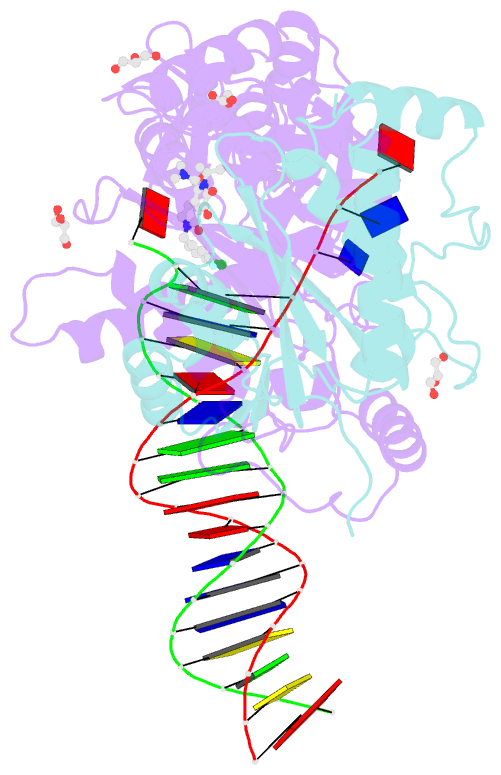Summary information and primary citation
- PDB-id
- 3oyh; SNAP-derived features in text and JSON formats;
DNAproDB
- Class
- recombination,viral protein-DNA
- Method
- X-ray (2.74 Å)
- Summary
- Crystal structure of the prototype foamy virus (pfv) intasome in complex with magnesium and the insti mk0536
- Reference
- Hare S, Vos AM, Clayton RF, Thuring JW, Cummings MD, Cherepanov P (2010): "Molecular mechanisms of retroviral integrase inhibition and the evolution of viral resistance." Proc.Natl.Acad.Sci.USA, 107, 20057-20062. doi: 10.1073/pnas.1010246107.
- Abstract
- The development of HIV integrase (IN) strand transfer inhibitors (INSTIs) and our understanding of viral resistance to these molecules have been hampered by a paucity of available structural data. We recently reported cocrystal structures of the prototype foamy virus (PFV) intasome with raltegravir and elvitegravir, establishing the general INSTI binding mode. We now present an expanded set of cocrystal structures containing PFV intasomes complexed with first- and second-generation INSTIs at resolutions of up to 2.5 Å. Importantly, the improved resolution allowed us to refine the complete coordination spheres of the catalytic metal cations within the INSTI-bound intasome active site. We show that like the Q148H/G140S and N155H HIV-1 IN variants, the analogous S217H and N224H PFV INs display reduced sensitivity to raltegravir in vitro. Crystal structures of the mutant PFV intasomes in INSTI-free and -bound forms revealed that the amino acid substitutions necessitate considerable conformational rearrangements within the IN active site to accommodate an INSTI, thus explaining their adverse effects on raltegravir antiviral activity. Furthermore, our structures predict physical proximity and an interaction between HIV-1 IN mutant residues His148 and Ser/Ala140, rationalizing the coevolution of Q148H and G140S/A mutations in drug-resistant viral strains.





